We have been with DigitalOcean for nearly a year and had no problem so far. So this article ‘DigitalOcean Cloud Hosting Review’ reviews it based on our experiences.
Table of Contents
Introduction
DigitalOcean is a cloud based hosting provider which is quite popular for its reliable cheap hosting for some times. But the reliability isn’t the only thing unique for DigitalOcean. The prices are quite affordable, a load of features relevant to function the virtual servers are contained, helpful fast customer support, and there are many more. These features made it an attractive place among many individuals, and various industries as they enhance the user experience across the platform.
Payment Methods and Virtual Credits
When getting started with digital ocean, a digital vault is given where it’s used to store virtual currency. The digital currency is updated by paying with real money through Paypal. Sometimes there are various promotions with which user can collect credits which then can be used to pay for the virtual servers. When enough credits are available, a virtual server can be created, which is known as droplet in the digital ocean platform. The minimum payout to be made is $5, which is mandatory to activate the account even if there are enough credits made through promotions. When Paypal isn’t an option, either a debit or a credit card can be utilized, but then the service is charged on the first day in the next month for the current month.
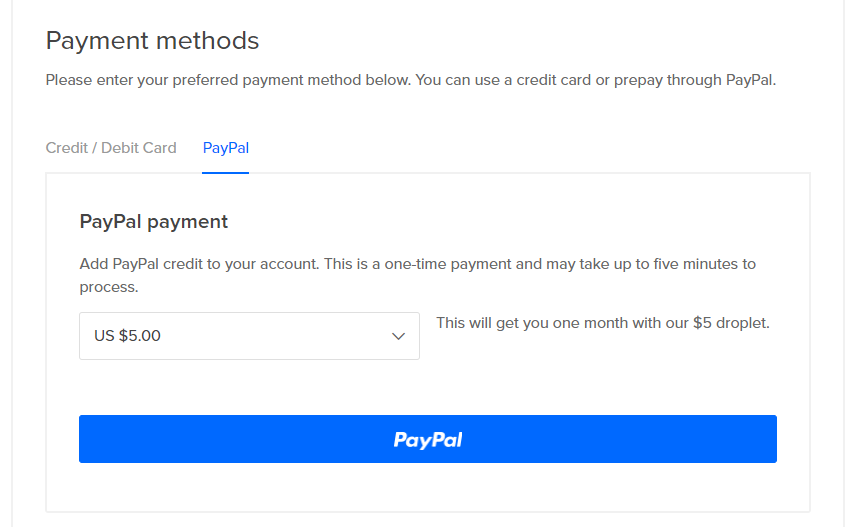
Droplets and Datacenters
A Droplet is a virtual server (digitalocean VPS) which is a kind of unmanaged server, and thus at least a basic technical knowledge is required to operate one. The term digital ocean web hosting isn’t popular for this very reason as well. However the one click apps relieve some burden. A Droplet consists of various properties, it can be an ubuntu 2GB one or debian 512MB server. Selecting these properties assigns them to it with ease. The process is quite straightforward and intuitive; hence even a newbie can figure out what is it all about as long as there is basic understand of server management.

There are currently 12 datacenters which are known as DigitalOcean datacenters as in 3 New Yorks, 2 San francisco, 2 Amsterdam, 1 Singapore, 1 London, 1 Frankfurt, 1 Toronto, 1 Bangalore (digitalocean india). Hosting in the appropriate datacenter not only reduces the latency, but also speeds up the delivery, and consequently increasing the conversion rate. The price is consistent across all the data centers; hence this is highly recommended for ones who are looking for either european or indian datacenters to host their contents.
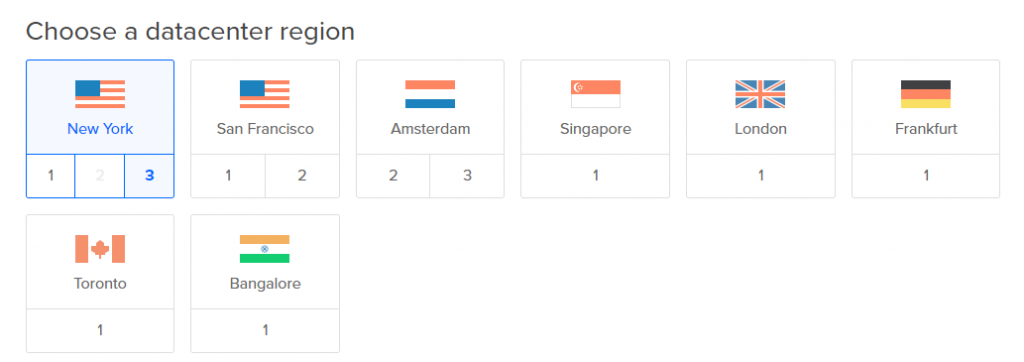
Droplet Properties
Once the droplet is created, the user is given the access to it by providing SSH/Password information. These information are straightly received to the email address which was used when signing up with digitalocean. With these information the server can be accessed remotely. Currently there are two ways for accessing the server. The one method is using the web based console which is available right in the Digitalocean control panel, the other method is using any SSH client such as Putty.
At the outset when logging to the server, the user is prompted to change the default automatically generated password to access the droplet, upon changing it, the user is free to do whatever they prefer. Hereafter everything is linux commanding. If Linux terminal is unfamiliar or have no idea of, then the process can be relieved by either installing a web based control panel with which the entire server is handled like a shared host, or a given app which comes as custom made images.
As operating systems, there are Ubuntu, FreeBSD, Fedora, Debian, CoreOS, CentOS with their latest version. Unfortunately, Arch Linux is not present there, even though the company was requested numerous times to include it as an image file in the creation wizard panel. However, there is an unofficial workaround to get Arch linux to the droplet.

As stated earlier there are also one-click apps which come as custom made images, these custom made images are for easing the process of installing certain applications, for instance the wordpress app is for installing wordpress with one click, likewise there are many applications as in discourse, dokku, LAMP, nodeJS, Django,Ghost, LEMP, MongoDB, PhpMyAdmin, Docker, GitLab, Machine Learning and AI, MySQL, Ruby on Rails. So there are 16 images which are also known as “one click apps”. The latest addition is “Machine learning and AI”. The biggest advantage of the one-click app is it automatically takes care of supporting software required to function the appropriate application, for instance WordPress requires an operating system, a web server, and a database server, but with one click app everything underlying is automatically installed prior to wordpress.
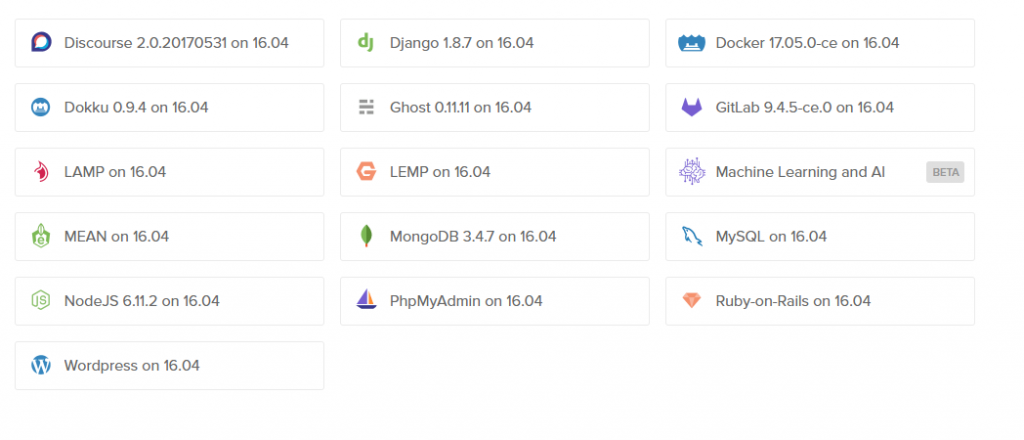
In a nutshell, when a droplet is created entire operating system can be installed, a custom made app can be installed along with supporting software or even a snapshot can be restored back if there are any available. This restoration is quite useful for moving snapshots across the droplets.
Droplet Prices
DigitalOcean pricing is quite affordable. In fact Digitalocean was one of the first cloud hostings for making the prices of cloud hosting affordable for regular people. The prices start from just $5 and go all the way up to $640 per month. There are three categories to which the packages are divided, standard, high memory, high CPU. In the standard category the specs are well balanced for general usage, in the high memory category the memory is relatively higher than other features, in the high CPU category as the name implies the CPU power, number of cores are high. So it’s important to analyze the project before picking the right package. Even though the prices are emphasized as per months, the droplets are actually charged on a hourly basis, and thus it makes the people to pay as you go way, but this is the basic price, apart from that there is also a price tag for additional features as well.

For Backups, the charge, at the moment is $2 per month, which keeps the data secure by backing them on a weekly basis. The backing up process is fully automated, but it’s recommended to shutdown the server in order to prevent database corruptions. The shutdown process can be automated with a cron job.
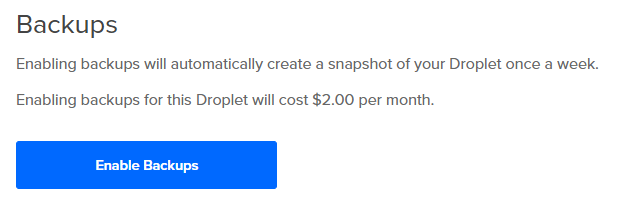
The resize feature allows to add either RAM/CPU or RAM/CPU/Hard Drive to an existing droplet to expand its capability, and it comes as a set of packages which also have a price tag as well.
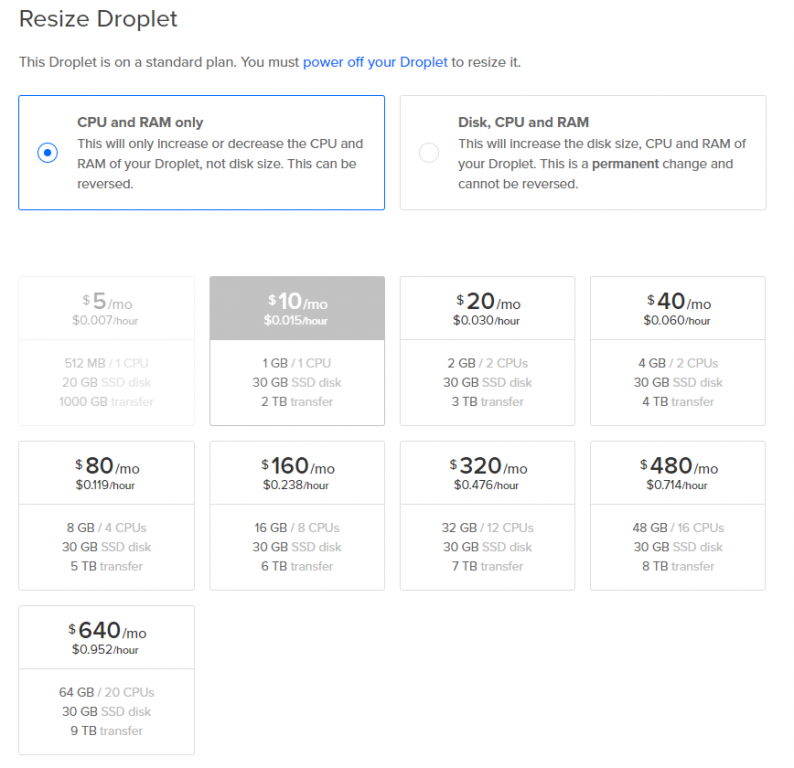
If only the space is needed, there is a this block storage feature which just expands the hard drive space of the existing droplet keeping the rest intact. Combination of these two can produce a cheap cloud host without wasting money.

Security
The security is an important aspect in one’s life in order to keep things safe, and for that reason Digital provides a couple of security measures to keep not only the digitalocean control panel, but also the virtual servers (droplets) made through it safe. The classical password, and username is the primary measure to secure the account, and apart from that, the two factor authentication which makes use of google two factor authentication app on android and iphone along with the SMS code sending backup method tighten the security further. The virtual servers (droplets) are secured with either a SSH key or a password. SSH key is highly recommended to use as the security measure to tighten the droplet’s security as it’s difficulty crack even with brute force method. The certificates feature is for when load balancers are used along with SSL/TLS connections. What it does encrypt the traffic received to the load balancer, and distribute it among the backend droplets as plain HTML. Adding the TLS/SSL certificate here makes sure the traffic is indeed decrypted prior to the distribution. This keeps the traffic between the users and the load balancer secure while maintaining the simplicity in the backend.
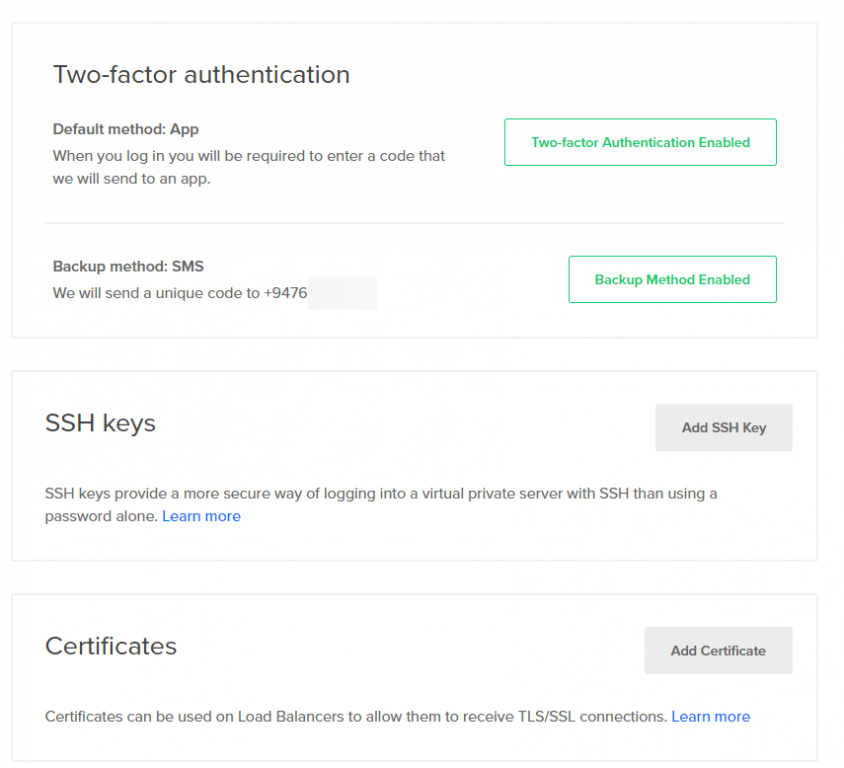
Extra Features
Apart from the basic service (droplets), there are a load of other features to enhance the user experience across the platform, such as free firewall, block storage to increase the space of the virtual server (droplet), system monitor which provides useful insight of the entire virtual server, “Backup” and snapshot for backing up the data of the entire server. Backup feature is useful if the data is regularly backed up, snapshot is useful if the data is occasionally backed up. The major difference between Backup and snapshot is when and how the backup process is initiated. With Backup, the data is backed up once per week automatically, but with snapshot the user is free to take backup whenever it’s necessary, and consequently paying for what is used, a dedicated public ip, dns records for domain, resizing the server to gain more resources (RAM, CPU), kernel managing, history records (something like event viewer in windows) which log the actions taken within the control panel (in digitalocean,not through the server), tagging virtual servers when there are thousands of them to distinguish one thing from another, load balancer, floating ip, API, console access which is similar to directly plug the keyboard to the server and is useful in controlling the server when ssh authentication details are not available, reset root password, hard reset which is similar to pressing the reset button on the computer, hard shutdown which is similar to pressing the shutdown button on the computer, alert policy which notifies when the particular resource (CPU, Memory, Bandwidth, Disk) is consumed below or above the given threshold, likewise so many useful feature. Not all the features might useful for everyone, but when the right time comes these features may come handy as they are provided within the control panel.
IP Types
As IP types, it supports the next generation Ipv6. Private ip for communicating with other droplets, since it uses the internal network, it doesn’t consume from the monthly allowed bandwidth quota. floating ip is for making the ip independant from the droplet, and thus the same ip can be remapped with another droplet, which is quite useful for creating high availability servers.

System Monitor
DigitalOcean uses its own open source script to monitor the resource consumption of the droplets. This script primarily shows bandwidth consumption, CPU usage, DISK I/O, but more info can be revealed by installing the Do Agent through any SSH client. With more info Disk usage, process details, top processes are available.
curl -sSL https://agent.digitalocean.com/install.sh | sh
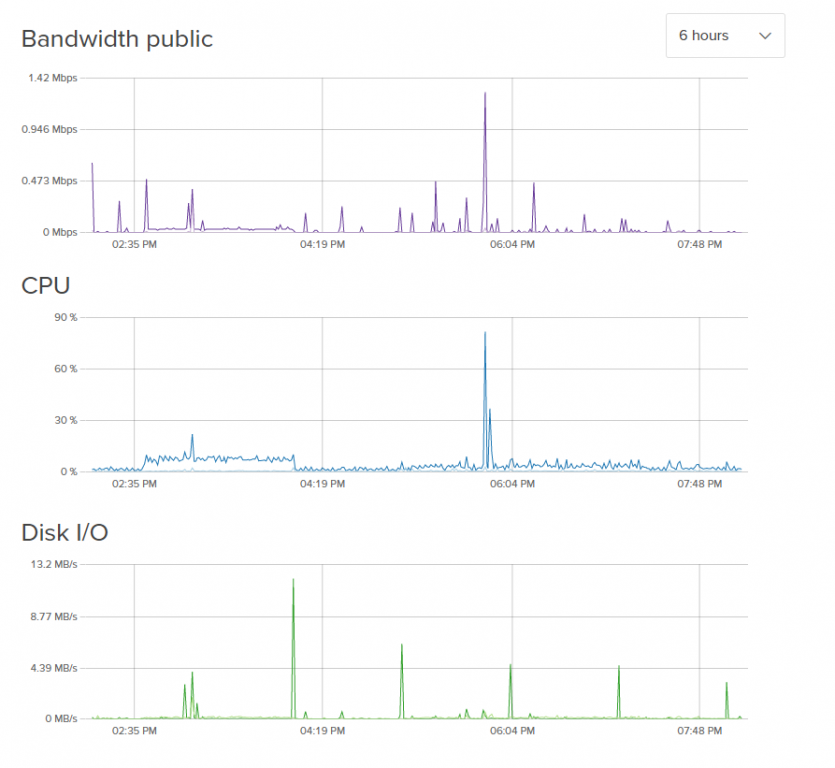
Firewall
The firewall is a basic one as the UFW in Linux operating system, but is sufficient to keep most of the threats at the bay. The settings made here only applicable to the selected droplets. It protects SSH, ICMP, TCP, HTTP, HTTPS, MySQL, UDP, and any other custom protocols.
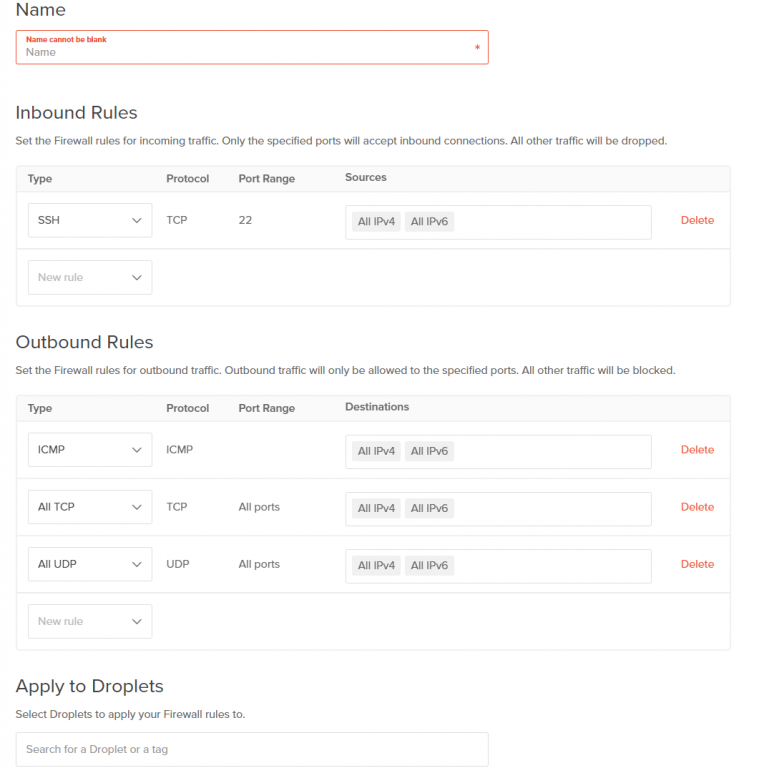
Domains
The “Domain” feature assigns the domains to already created droplets, but then digitalocean’s nameservers have to be stated in the appropriate domain registrar’s DNS records to make this works. Once it’s configured properly, the DNS settings pertain to the domain can be adjusted through the “Networking” -> “Domain” tab in DigitalOcean control panel.
NameServers of DigitalOcean
ns1.digitalocean.com
ns2.digitalocean.com
ns3.digitalocean.com

Customer Support and Help
Support is quite good, but it’s hard to expect support like from a shared host as the user is expected to manage the whole virtual server alone, but top notch support is given when it’s caused by hardware or network failure, and also sometimes the support gives valuable advices by either explaining or pointing to their documentation. DigitalOcean has a large tutorial set which explains how to get things done with ease, and it also helps anyone regardless of their background. As explained earlier, the virtual servers are charged on an hourly basis, and therefore the server can be tried without paying a large upfront fee at the outset. All in all DigitalOcean is an excellent reliable cheap cloudhost which has almost no downtime and worth every penny.
Benchmark Report
The following reports are for finding the performance of the droplets. It only assesses $5/$10 and $20/$40 packages, but is sufficient to have an idea about rest of the packages as well.
Test results for 1GB at Digital Ocean
| Server specs: | Intel(R) Xeon(R) CPU E5-2650 v4 @ 2.20GHz |
| 992 MB RAM / 30 GB disk space | |
| Ubuntu 16.04 Xenial | |
| New York, United States | |
| Benchmark summary: | UnixBench – 1577.0 |
| Disk Read – 296 MB/s | |
| Disk Write – 717 MB/s | |
| Bandwidth – 730.19 MB/s | |
| More: https://serverscope.io/trials/e5XM | |
Test results for 4GB at Digital Ocean
| Server specs: | 2 × Intel(R) Xeon(R) CPU E5-2650 v4 @ 2.20GHz |
| 4 GB RAM / 61 GB disk space | |
| Ubuntu 16.04 Xenial | |
| New York, United States | |
| Benchmark summary: | UnixBench – 2611.3 |
| Disk Read – 3205 MB/s | |
| Disk Write – 1803 MB/s | |
| Bandwidth – 746.41 MB/s | |
| More: https://serverscope.io/trials/36ar | |
So if you are interested to try it out, use this link. It gives you free $10 credits when signing up, which is enough for 2 months when using the $5 package. Let us know what do you think about DigitalOcean, your experiences and anything that you found useful in the comment section.

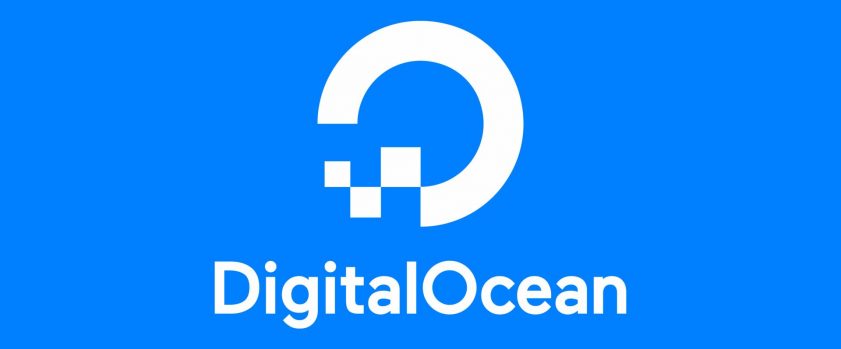



IP shows the website is hosted with VULTR.
Yeah, because we recently moved to Vultr. And that’s why we decided to make this review after being with DigitalOcean close to a year.
Thanks for the comment anyway 🙂
Thanks.